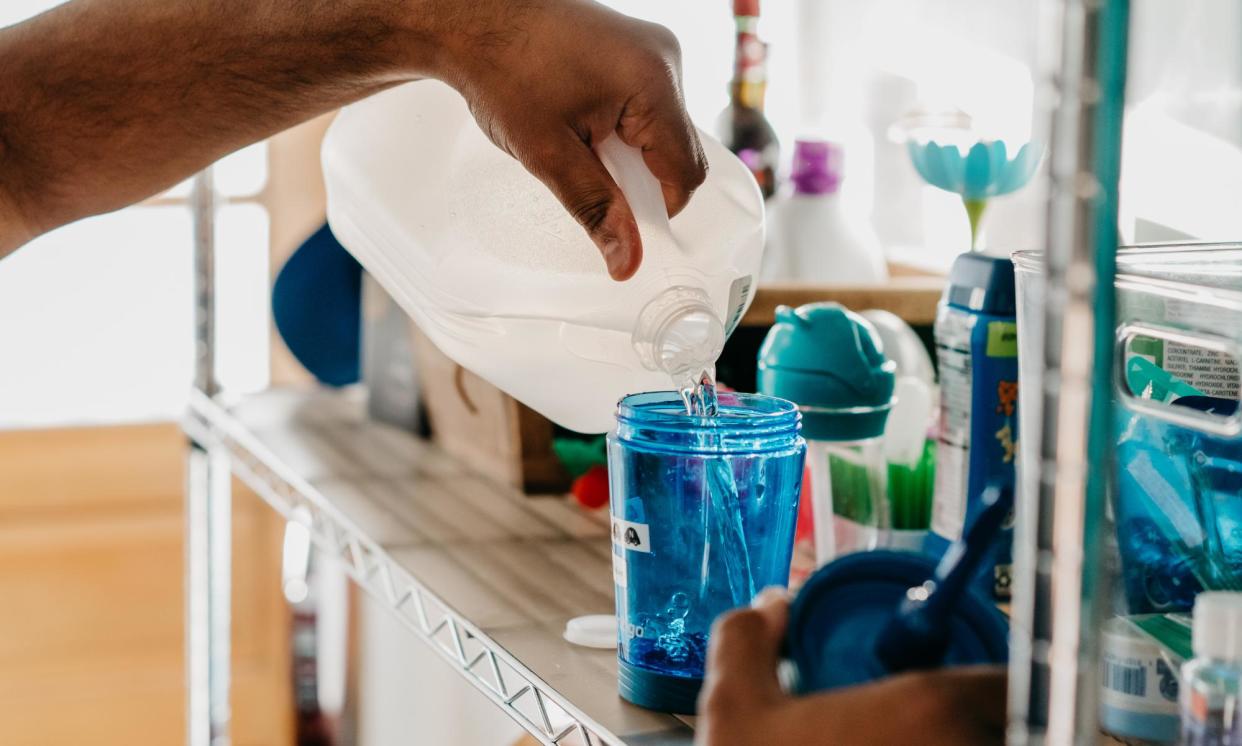Nearly 130,000 children exposed to lead-tainted drinking water in Chicago

About 129,000 Chicago children under the age of six are exposed to poisonous lead in their household drinking water because of lead pipes, according to a study published on Monday.
The study used artificial intelligence to analyse 38,000 home water tests conducted for the city of Chicago, along with neighborhood demographics, state blood samples and numerous other factors.
Related: Revealed: the ‘shocking’ levels of toxic lead in Chicago tap water
It found that Black and Latino residents are more likely to have lead-contaminated water because of lead pipes. And it estimated that the 19% of Chicago children who use unfiltered tap water as their primary drinking source have about twice as much lead in their blood as they would otherwise.
“These findings indicate that childhood lead exposure is widespread in Chicago, and racial inequities are present in both testing rates and exposure levels,” said the study, published by the Johns Hopkins Bloomberg School of Health in Jama Pediatrics. “We estimated that more than two-thirds of children are exposed to lead-contaminated drinking water.”
The federal government has said that there is no safe level of lead in drinking water. Studies have shown that even small amounts of the highly poisonous metal can affect childhood brain development and contribute to preterm births, heart problems and kidney disease. Yet Chicago still has 400,000 homes served by potentially water-contaminating lead service lines – more than any other US city.
“I think residents have reason to be concerned,” said public health professor Benjamin Huynh, who authored the study with Elizabeth Chin and Mathew Kiang. “I think this should be a call to get your water tested for lead, see what the results are, then make your decisions accordingly.”
Huynh said the idea to conduct the research came after seeing the Guardian’s analysis of 24,000 city water tests, which found one-third of home water tests had more lead than the federal limit for bottled drinking water, which is 5 parts per billion (ppb).
The Johns Hopkins study used a more stringent measure, and flagged as concerning any home tests that detected more than 1ppb. Huynh said this was based on the fact that no level of lead consumption is considered safe and lead service lines can often create spikes in lead levels that go undetected, especially after they are disturbed by nearby construction. Similarly, the American Academy of Pediatrics has called for state and local governments to limit the lead in school drinking fountains to no more than 1ppb.
The US Environmental Protection Agency (EPA) has a municipal “action level” of 15ppb, meaning that cities are only required to notify the public when at least 10% of a small sample of homes tested are above that amount.
By this measure, Chicago is in compliance.
“Nothing is more important than the health and safety of Chicago’s residents and, particularly, our children,” city spokesperson Megan Vidis said in an emailed statement. “Chicago’s water continues to meet and exceed all standards set by the US Environmental Protection Agency.”
She said that “the city has introduced five programs to remove Chicago’s 400,000 lead service lines and offers free water testing to any resident”.
While the EPA is proposing to require most cities around the nation to remove all lead service lines within 10 years, it is giving Chicago 40 years to do so because of the large number of unreplaced pipes in the city.
“If we’re looking at 40 more years of contaminated drinking water, what does that mean for the children?” Huynh said. “What can we do about that in the meantime?”
Chakena Perry, Chicago water advocate for the Natural Resources Defense Council, called for the city to distribute water filters to families with lead service lines and do everything possible to speed up the work to remove them.
“Clean drinking water is something that everyone deserves no matter their zip code or their life circumstances,” said Perry.
The city’s newly elected mayor, Brandon Johnson, has vowed to replace 40,000 lead lines by 2027.
But the study authors and other experts say this is not enough.
“With 400,000 lead service lines, Chicago officials need to be way more aggressive in protecting their children and the population in general,” said water safety engineer Elin Betanzo, who was one of the first to flag Flint’s lead water issues. “There’s really no reason for anybody to be drinking lead in their water.”


